How A Clutch Works? We try to explain its working, parts and types in this story. Towards the end we have also cleared a few myths associated with types of clutch.
A clutch is that part of the engine which engages or disengages power from the engine crankshaft to transmission. A clutch is the mechanism with the help of which you change gears. In simple words, it turns on or off power to the rear wheel.
A clutch is made of clutch assembly which includes clutch plate, Clutch basket, Clutch hub, pressure plates, Clutch springs, lever and clutch cable. Let us understand these parts in simple language…
Clutch Basket: It is bowl shaped basket which holds the entire clutch assembly. It has teeth on the outer surfaces which fix on the primary drive teeth. It means that it is connected with the transmission. It is bolted onto the end of clutch shaft.
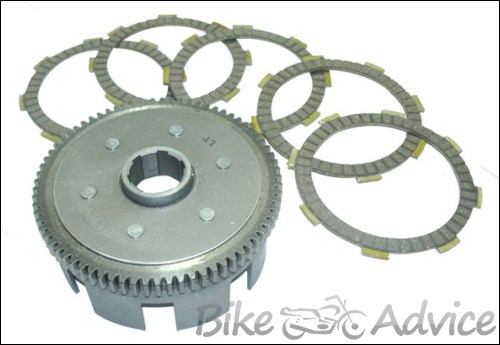
Clutch Hub: The clutch hub is placed between clutch basket and pressure plate. The clutch plates are mounted on it. It has teeth at the centre hole which rotate with the main shaft. It means it is connected with the engine.
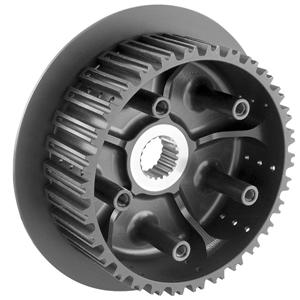
Clutch Plate: There are two types of plates in clutch plate. One is Drive (friction) plate another is Driven (Steel) plate
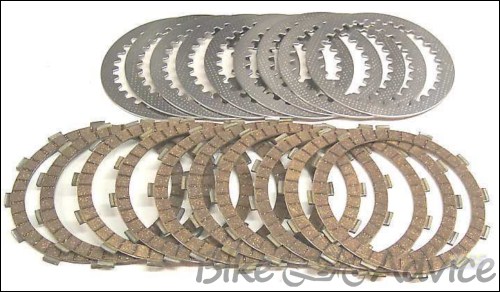
Drive (friction) plate: The friction plate is ring shaped and coated with fiber. It is the wear and tear part of the clutch assembly. The friction plate surfaces interface between the clutch basket tangs (gaps) and pressure plate. It has teeth on the outer surface. These teeth fix on the cutouts between clutch hub tangs (gaps). It is coated with the same material as you see in brake pad (shoe).
Driven (steel) plate: It is ring shaped and made of steel and sometime of aluminum. The surfaces of steel or aluminum plate interface between pressure plate and clutch hub. It has teeth on the inside surface. These teeth are fixed on the cutouts of clutch hub. Mostly steel plates are used in clutch assembly due to their durability. The aluminum plates are used in MotoGP due to their lighter weight. These plates worn out very fast compared to steel plates.
Pressure Plate: It is the moving part of the clutch assembly which works against clutch spring tension. It releases the clamping action on the clutch plates when the clutch lever is engaged.
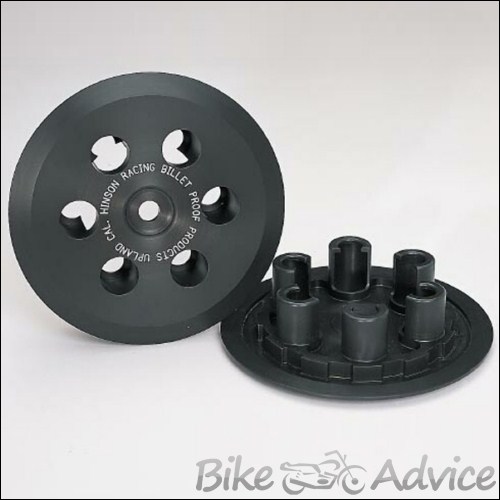
Clutch springs: The clutch springs shape is like short coil. These springs continuously hold the friction and steel or aluminum plates through spring tension. It also prevents slippage except when the clutch lever is engaged. Most of motorcycle has five or more springs used per clutch assembly. For higher engine output stiffer or more springs are used while softer or few springs used in order to lighten the clutch level pulling effort.

Lever: It is metal rode which pivots on a perch located of the left handlebar. It gives input to the clutch assembly.

Clutch Cable: The clutch cable is a cable through which the rider’s input passes to the clutch’s internals.
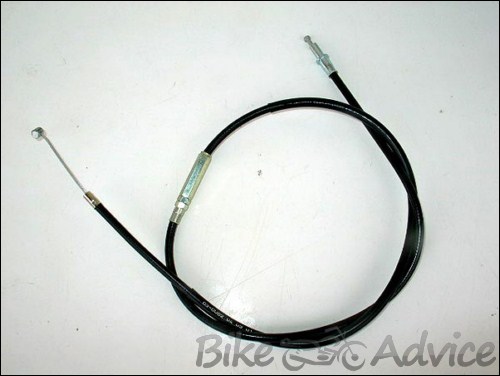
Clutch Cover: It covers the entire clutch assembly.
How A Clutch Works
In a normal condition a clutch is engaged with the engine. When a rider presses the clutch lever for changing gears, the coil springs in the clutch are compressed and the pressure plate expands which allows the stake of clutch plates to move independently.
The stake of clutch is arranged in such a manner that friction plate and steel plate alternate. It makes the engine and clutch to move at different speeds. Ultimately the clutch disengages power to the transmission which allows rider to shift the gears.
Types of Clutch
There are two types of clutch – Wet clutch & Dry clutch
Wet Clutch
Wet clutch are universal and found on most bikes. Almost 99% of motorcycles manufactured use the wet type of clutch. In the wet clutch set up the entire clutch is inside the case of the bike. Here it is bathed in oil which acts like a dampener. It stops the clutch from knocking on itself.
Advantages:
- It has less wear and tear effect due to oil circulation.
- It has smoother engagement compared to dry clutch
- It is cooled by engine oil
- It tolerates slipping during initial clutch take off
- It is cheaper to manufacture
- The wet clutch operation is quiet and makes less noise compare to dry clutch operation.
Disadvantages:
- Oil needs to be circulated specially for the clutch presence.
- Due to rotation of clutch in oil the engine losses some horse power to rear wheel
- Clutch garbage and hammer mixes in engine oil (an oil filter is fitted to avoid such problem)
Dry Clutch:
The dry clutch is almost identical to the wet clutch the only difference s there are seals on the shafts that keep the oil out. In the dry clutch set up the entire clutch is outside the case of the bike.

There is no oil circulated in to the clutch, which results into clutch knocking on itself. Ducati’s generally use this kind of a set-up.
Tyre Ratings, Maintenance: All You Must Know About Tyres – in Simple Terms
Advantages:
- It is very easy to replace as it is outside the case of the bike.
- Oil does not need to circulate for clutch, which ultimately eliminates reduction in loss of Horse power due to oil circulation in clutch. It is the biggest reason why it is used in racing bikes.
- You can use friction modified oils in engine
- It is easier to use.
Disadvantages:
- Sometimes it has a tendency to grab during engagement which makes take off difficult.
- The clutch overheats due to grabbing effect and wears out very fast.
- The same thing makes clutch operation less progressive.
- It has shorter life.
- It is very noisy; sometimes feel like hammering.
Myths About Wet & Dry Clutch
Wet clutches are easier to pull on the clutch lever.
FACT: It is not true. Lever pressure is dependent on clutch set up. If you use soft springs it will make the pull operation easier and if you use stiffer springs it require more pressure to pull the lever. High performance bikes generally use stiffer springs and hence they require higher pressure to pull the lever.
What Is Engine Knocking? How To Avoid it in Your Bike?
Dry clutch can transmit more power.
FACT: It is not true as most of the powerful bikes have wet clutches (for example Suzuki Hayabusa and other). The dry clutch eliminates the loss of horse power due to oil bathing so that power is available at the rear wheel.
Only dry clutch can be used as slipper clutch
FACT: It really does not make any difference.
Now you know how a basic clutch works. Read our next article on Slipper Clutch!
– Mahavir Kothari


